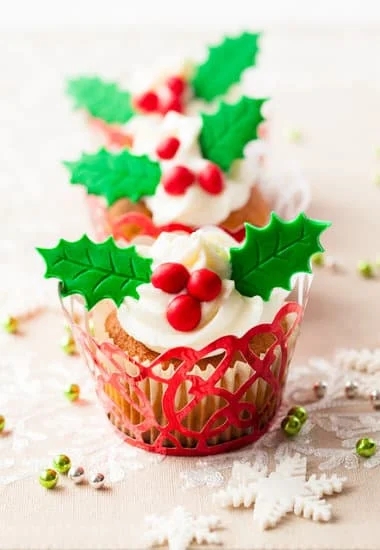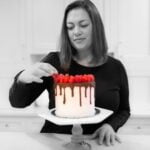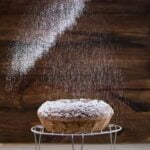Fondant cake decoration has become an essential part of the baking world, adding a touch of elegance and creativity to desserts. This versatile sugar paste allows bakers to craft intricate designs, unique shapes, and stunning details on cakes for any occasion. From simple birthday cakes to elaborate wedding cakes, fondant has revolutionized the art of decorating.
The history of fondant dates back centuries, originating in France as a smooth and pliable icing for pastries. Over time, fondant gained popularity among bakers worldwide for its ability to create flawless finishes on cakes. Today, fondant is a staple in cake decorating, offering endless possibilities for creative expression and customization.
With different types of fondant available such as rolled fondant, marshmallow fondant, and poured fondant, bakers can experiment with various textures and flavors to suit their preferences. Paired with the right tools and equipment like fondant smoothers, rolling pins, and modeling tools, mastering the art of fondant cake decoration becomes an achievable feat. Stay tuned to discover the exciting techniques, design ideas, troubleshooting tips, and expert advice to elevate your fondant decorating skills.
History of Fondant
Initially used as a way to preserve fruit and make candies, fondant gradually made its way into the realm of cake decorating. It was primarily popularized in Europe during the 16th century when it became a favorite for creating intricate designs and decorations on cakes served at royal banquets and weddings.
One of the key factors that contributed to fondant’s popularity in cake decorating is its versatility and pliability. Fondant can be rolled out into thin sheets and draped over cakes to create a smooth, polished finish.
Its ability to hold intricate shapes and designs also makes it ideal for creating detailed decorations like flowers, ribbons, and figurines. As a result, fondant quickly became the medium of choice for professional bakers and cake decorators looking to achieve elaborate designs on their creations.
Over time, fondant recipes evolved to include different variations such as rolled fondant, marshmallow fondant, and poured fondant. Rolled fondant, made from sugar, water, gelatin, and glycerin, is perhaps the most commonly used type for cake decoration due to its smooth texture and ease of use. Marshmallow fondant offers a sweeter flavor profile with marshmallows serving as the base ingredient.
Poured fondant, on the other hand, is more liquid in consistency and is often used for filling pastries or glazing petit fours. Each type of fondant brings its unique characteristics to the world of cake decoration while still maintaining the same core qualities that make fondant so beloved by bakers worldwide.
| Types of Fondants | Description |
|---|---|
| Rolled Fondant | Made from sugar, water, gelatin & glycerin; Easy to use & gives a polished finish |
| Marshmallow Fondant | Sweeter taste; Marshmallows are base ingredient; Popular among bakers for its flavor |
| Poured Fondant | Liquid consistency; Used for filling pastries or glazing petit fours; Adds sweetness & shine |
Types of Fondant
Fondant is a versatile and popular choice for cake decoration, offering a smooth and polished finish to cakes that make them look professionally crafted. There are several types of fondant available for cake decorating, each with its unique characteristics.
One of the most common types is rolled fondant, which is made from sugar, corn syrup, and water, creating a pliable dough-like consistency perfect for covering cakes. Rolled fondant comes in various colors and can be easily shaped and molded to create intricate designs on cakes.
Another popular type of fondant is marshmallow fondant, which is made by melting marshmallows and mixing them with powdered sugar. This type of fondant has a sweet flavor and is softer than traditional rolled fondant, making it easier to work with for beginners. Marshmallow fondant can also be easily flavored or colored with food coloring to suit the desired design aesthetic.
Additionally, poured fondant is another option for cake decoration, which involves heating a mixture of sugar, water, and sometimes corn syrup until it reaches a thick liquid consistency. Poured fondant creates a shiny glaze on cakes that dries quickly and provides a smooth surface for decorations.
Choosing the Right Fondant
When deciding on the type of fondant to use for cake decoration, consider factors such as taste preference, ease of use, and intended design. Rolled fondant offers versatility in shaping intricate designs but may have a firmer texture compared to marshmallow fondant’s softer finish. Poured fondants are excellent for creating glossy finishes on petit fours or cupcakes but may require more precision when working with it due to its liquid state during application.
Experimenting With Different Fondants
To truly understand the capabilities of each type of fondant, experimenting with different recipes and brands can help you find what works best for your preferences. Some decorators prefer the malleability of marshmallow fondant for sculpting figurines or intricate details on cakes while others appreciate the smooth finish achieved with rolled fondants. Trying out different types will allow you to expand your skills in working with various textures and consistencies when it comes to fondant cake decoration.
Fondant Tools and Equipment
When it comes to fondant cake decoration, having the right tools and equipment is essential to achieve professional-looking results. Whether you are a beginner or an experienced baker, having the proper tools can make all the difference in creating stunning fondant designs. Here, we will discuss some of the essential tools needed for fondant cake decoration.
Fondant Smoothers
One of the key tools for working with fondant is a fondant smoother. These handy tools help eliminate any wrinkles or air bubbles that may form when covering a cake with fondant. Fondant smoothers come in various shapes and sizes, and are typically made of plastic or metal. They are used to smooth out the surface of the fondant and create a flawless finish on your cake.
Rolling Pins
A good quality rolling pin is another crucial tool for working with fondant. When rolling out fondant to cover a cake or create decorations, having a non-stick rolling pin can make the process much easier. Look for rolling pins that are specifically designed for working with fondant, as they provide a smooth surface for rolling out the icing evenly.
Modeling Tools
For adding intricate details and decorations to your fondant cakes, a set of modeling tools is essential. These tools come in various shapes and sizes, allowing you to create textures, emboss patterns, shape flowers, and more. Whether you’re sculpting figurines or creating delicate details on your cakes, having a set of modeling tools in your kit will help elevate your fondant cake decoration skills.
Having these essential tools and equipment for fondant cake decoration will not only make the process more efficient but also help you achieve professional results. Investing in quality tools and familiarizing yourself with their uses can unlock endless possibilities when it comes to creating beautiful and visually appealing fondant designs on your cakes.
Fondant Techniques
Fondant is a versatile and popular medium for decorating cakes, providing a smooth and polished finish that allows for intricate designs and creative possibilities. Mastering different fondant techniques is key to achieving professional-looking cake decorations that will impress your friends and family. Below are some essential techniques for working with fondant:
- Covering a Cake: One of the most common uses of fondant is to cover an entire cake, giving it a flawless and elegant appearance. To do this, roll out the fondant into a thin, even layer using a rolling pin. Carefully drape the fondant over the cake and smooth out any wrinkles or air bubbles using a fondant smoother.
- Creating Shapes: Fondant can be molded and shaped into various shapes and figures to add decorative elements to your cakes. Use cookie cutters or special fondant cutters to create shapes like flowers, leaves, or geometric patterns. You can also use modeling tools to add texture and details to your fondant creations.
- Adding Intricate Details: For more intricate designs, you can use fondant as a canvas to create detailed decorations such as lace patterns, ruffles, or 3D figurines. Invest in fine-tipped brushes, edible food coloring, and edible dusts to bring your designs to life with vibrant colors and shading.
By mastering these fundamental techniques for working with fondant, you can elevate your cake decorating skills and create stunning confectionery masterpieces that will be the centerpiece of any celebration.
Remember practice makes perfect when it comes to working with fondant, so don’t be discouraged if your first attempts are not flawless. With patience, creativity, and attention to detail, you can develop your skills in fondant cake decoration and unleash your artistic vision on delicious works of art that not only taste amazing but look absolutely stunning as well.
Fondant Cake Design Ideas
Fondant cake decoration offers endless possibilities when it comes to designing unique and stunning creations for special occasions. Whether you are a seasoned baker or just starting out, finding inspiration for your fondant cake designs can elevate your baking skills to the next level. Here are some creative ideas to spark your imagination:
- Theme-based Cakes: Incorporate popular themes like floral, woodland, tropical, or even characters from beloved movies or TV shows into your fondant cake designs.
- Colorful Creations: Experiment with vibrant colors or stick to a monochromatic palette for a modern and sophisticated look. Ombre effects, metallic accents, and pastel shades can all add a wow factor to your fondant cakes.
- Elegant Styles: Opt for elegant and timeless styles such as lace patterns, intricate piping designs, or delicate sugar flowers to create a visually appealing and sophisticated fondant cake.
When brainstorming ideas for fondant cake decoration, consider the occasion and preferences of the recipient. Customizing the design to match the theme of a birthday party, wedding celebration, or any other event will make your creation truly special and memorable. With the right tools and techniques at your disposal, you can bring your vision to life and create show-stopping fondant cakes that will impress your friends and family.
Whether you prefer classic designs or want to push the boundaries with avant-garde concepts, fondant cake decoration allows for endless creativity and personalization. Don’t be afraid to experiment with different themes, colors, and styles to discover what speaks to you as a baker. Remember that practice makes perfect when it comes to working with fondant, so keep honing your skills and exploring new ideas to master the art of creating beautiful and delectable fondant cakes.
Troubleshooting Common Fondant Issues
Fondant cake decoration is an art form that requires attention to detail and skill. However, it is not without its challenges. Common problems such as cracking, tearing, and air bubbles can often occur when working with fondant.
Cracks on the surface of the fondant can be caused by excessive dryness or rough handling during the process. Tearing may happen due to insufficient kneading of the fondant or improper application on the cake. Air bubbles can form when rolling out the fondant, trapping air underneath its surface.
To address these common issues when working with fondant, there are several techniques that can help fix them. In case of cracking, lightly moistening the cracked area with a small amount of water and gently smoothing it out with a fondant smoother can often resolve the problem.
For tears in the fondant, using a small piece of extra fondant to patch up the tear and blending it seamlessly with your fingers can mend the issue. As for air bubbles, using a pin or needle to gently prick the bubble and pressing out any trapped air before smoothing over the area can eliminate this concern.
It’s important to note that prevention is key when it comes to avoiding these common fondant issues. Properly kneading and rolling out the fondant to an even thickness before applying it to the cake can help minimize cracks and tears.
Additionally, ensuring that all tools and surfaces are clean and properly prepared can reduce the likelihood of air bubbles forming under the fondant layer. By taking these precautions and mastering troubleshooting techniques, bakers can achieve flawless fondant cake decorations every time.
| Common Fondant Issues | Fixes |
|---|---|
| Cracking | Moisten cracked area lightly with water and smooth with fondant smoother |
| Tearing | Patch tear with extra fondant piece and blend seamlessly with fingers |
| Air Bubbles | Prick bubble with pin or needle, press out trapped air, then smooth over area |
Fondant Cake Decoration Tips
In conclusion, fondant cake decoration has become an essential skill in the world of baking, adding a touch of elegance and creativity to cakes for various occasions. From its humble origins to the variety of types available today, fondant has evolved into a popular choice for creating intricate and beautiful cake designs. By using the right tools and techniques, anyone can achieve professional-looking fondant cake decorations that will impress guests and clients alike.
When it comes to working with fondant, beginners should keep in mind some key tips and tricks to ensure successful results. Proper storage of fondant is crucial to maintain its pliability and prevent drying out. Using fondant smoothers, rolling pins, and modeling tools correctly can help achieve smooth finishes and intricate details on decorations. Additionally, troubleshooting common issues like cracking or air bubbles with quick fixes can save time and frustration during the decorating process.
With a bit of practice and patience, mastering the art of fondant cake decoration is within reach for anyone willing to give it a try. Whether creating whimsical shapes or elegant designs, the possibilities are endless with fondant. By exploring different techniques, experimenting with colors and themes, and keeping these helpful tips in mind, aspiring bakers can elevate their cake decorating skills to new heights. So go ahead, unleash your creativity with fondant cake decoration.
Frequently Asked Questions
How to Make Fondant to Decorate a Cake?
Making fondant to decorate a cake involves mixing confectioners’ sugar, gelatin, glycerin, and water until it forms a smooth dough. Knead it well, adding color or flavoring as desired.
How Do You Attach Fondant Decorations to a Cake?
Attaching fondant decorations to a cake is typically done using either water or royal icing as an adhesive. Simply brush the back of the decoration with water or royal icing and place it on the cake.
How Far in Advance Can You Make Fondant Decorations for a Cake?
Fondant decorations can be made in advance for a cake depending on the complexity of the design. Simple shapes can be made up to two weeks ahead, while more intricate designs may need to be made closer to serving time.

Welcome to our cake decorating blog! My name is Destiny Flores, and I am the proud owner of a cake decorating business named Cake Karma. Our mission is to provide delicious, beautiful cakes for all occasions. We specialize in creating custom cakes that are tailored specifically to each customer’s individual needs and tastes.





